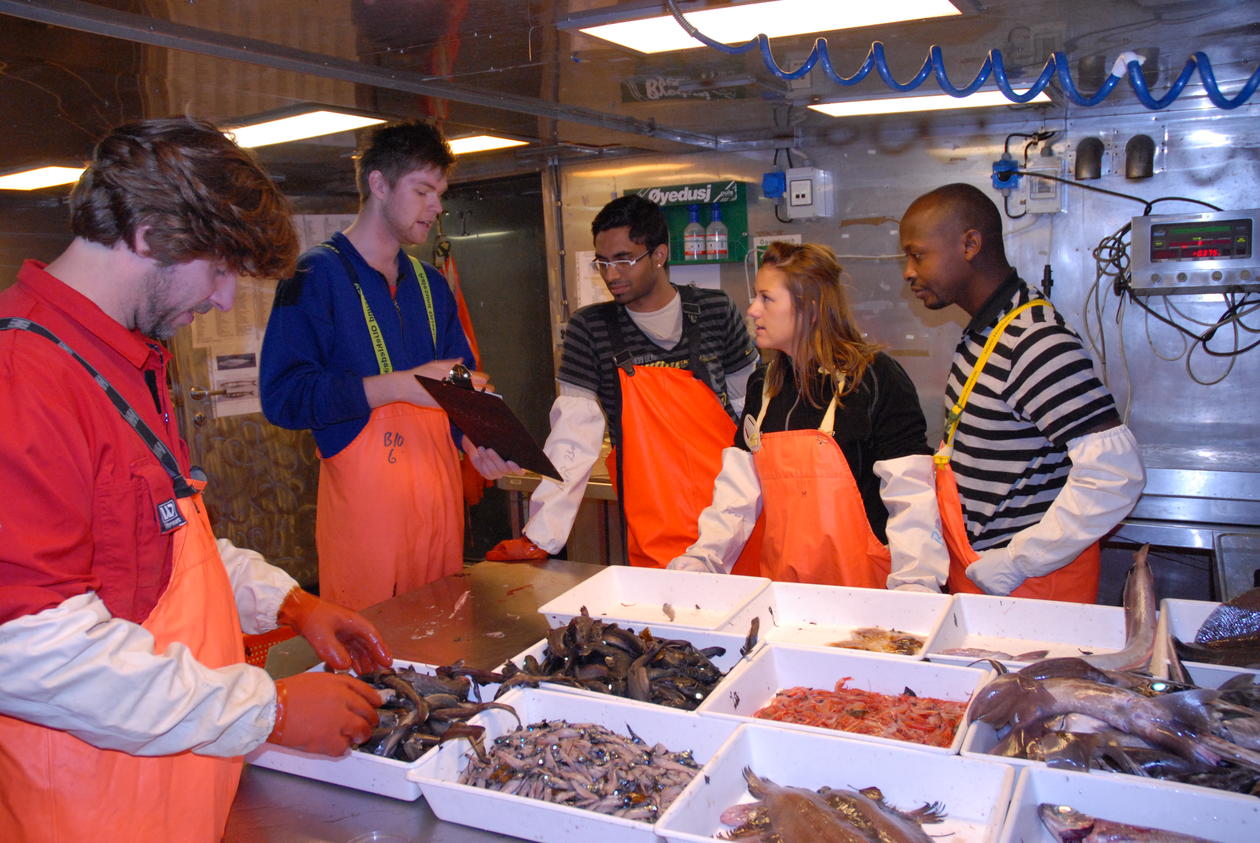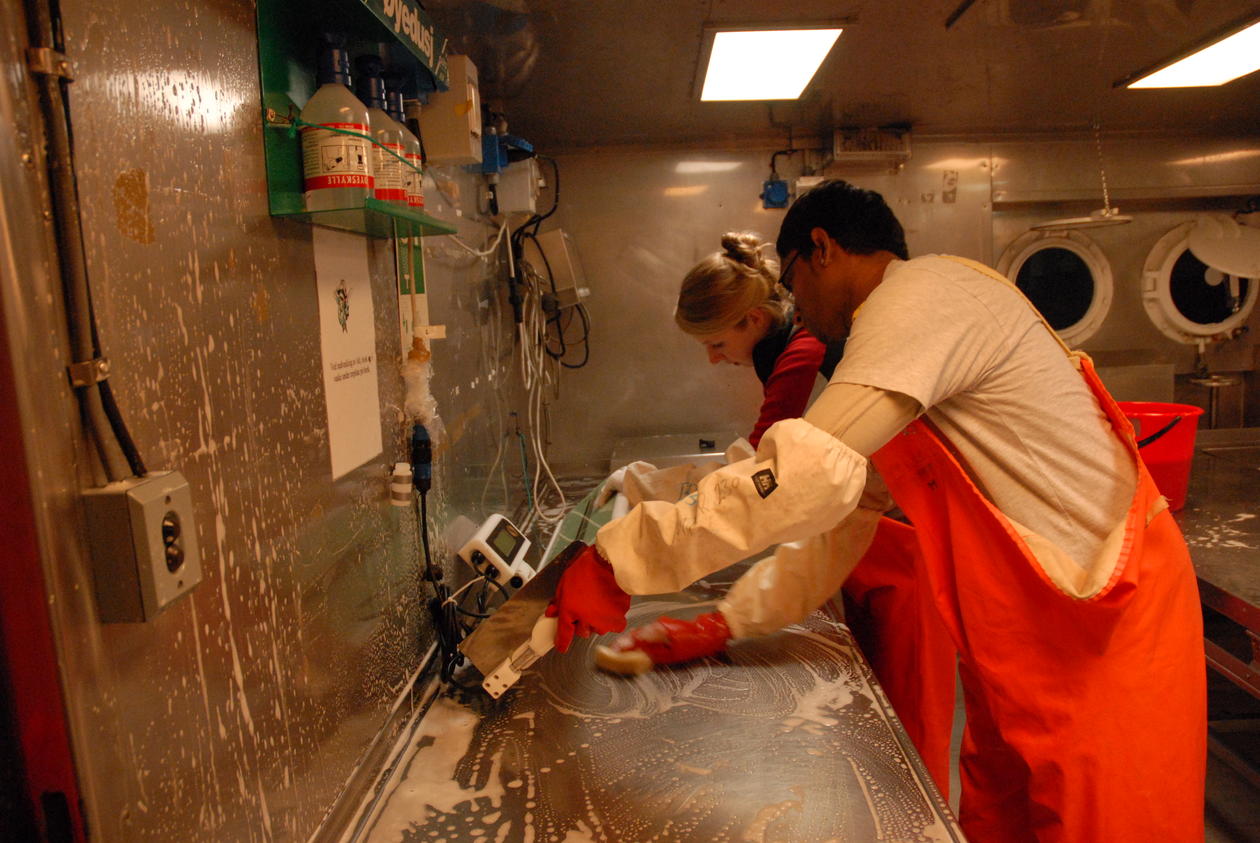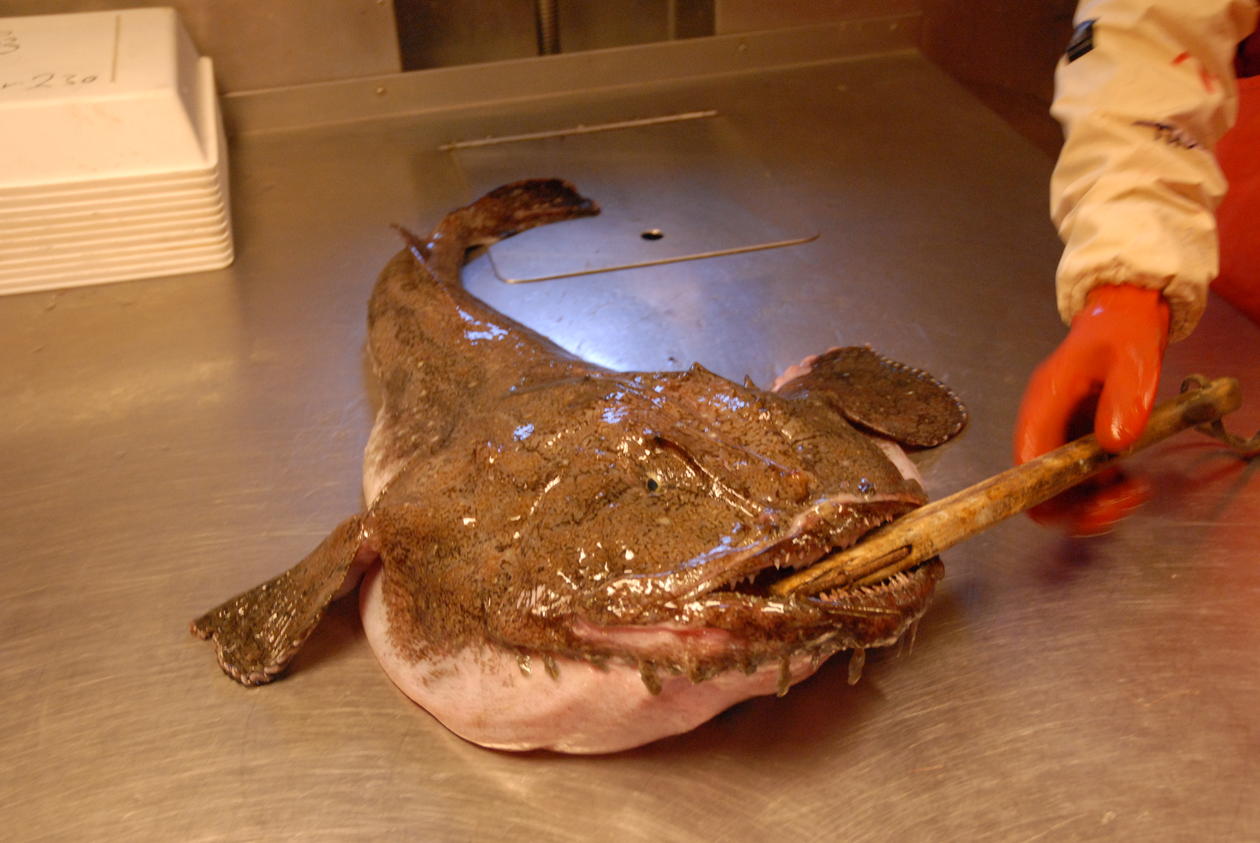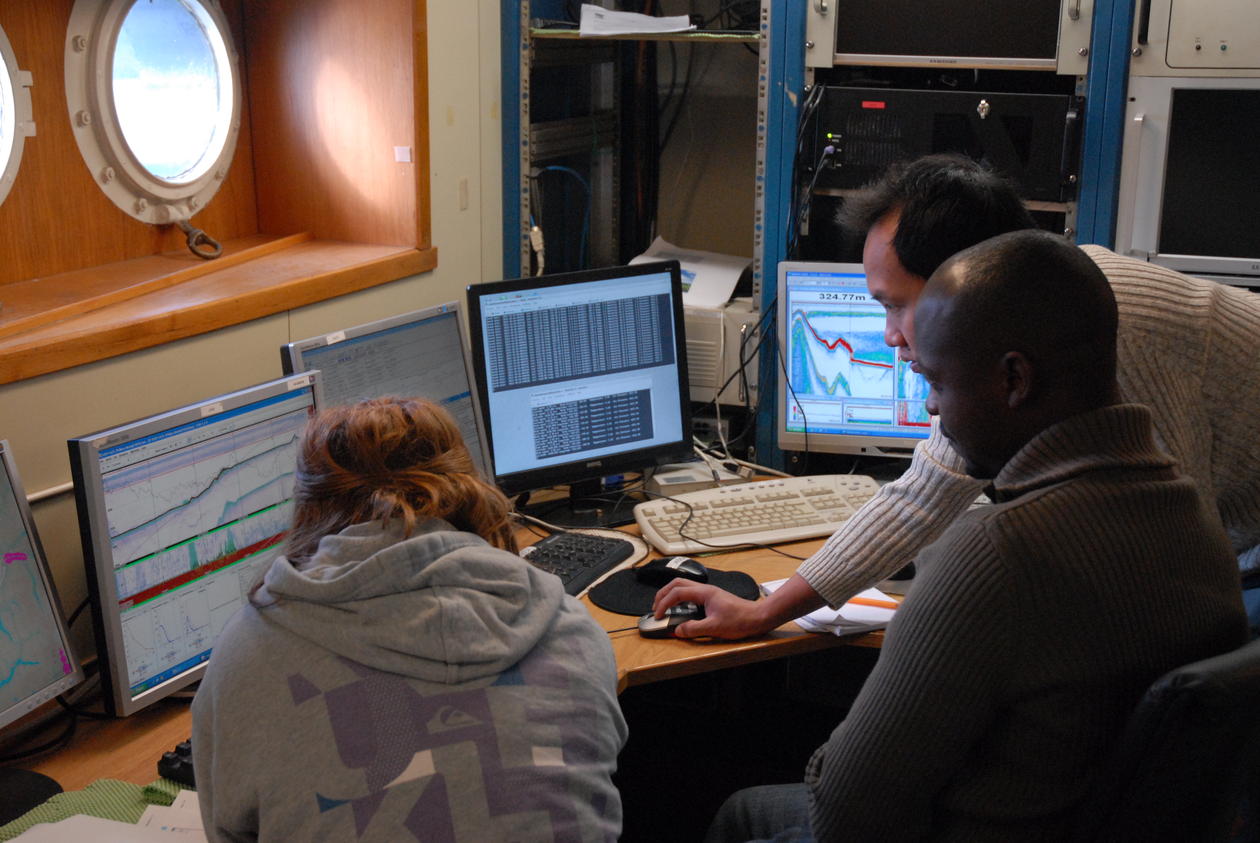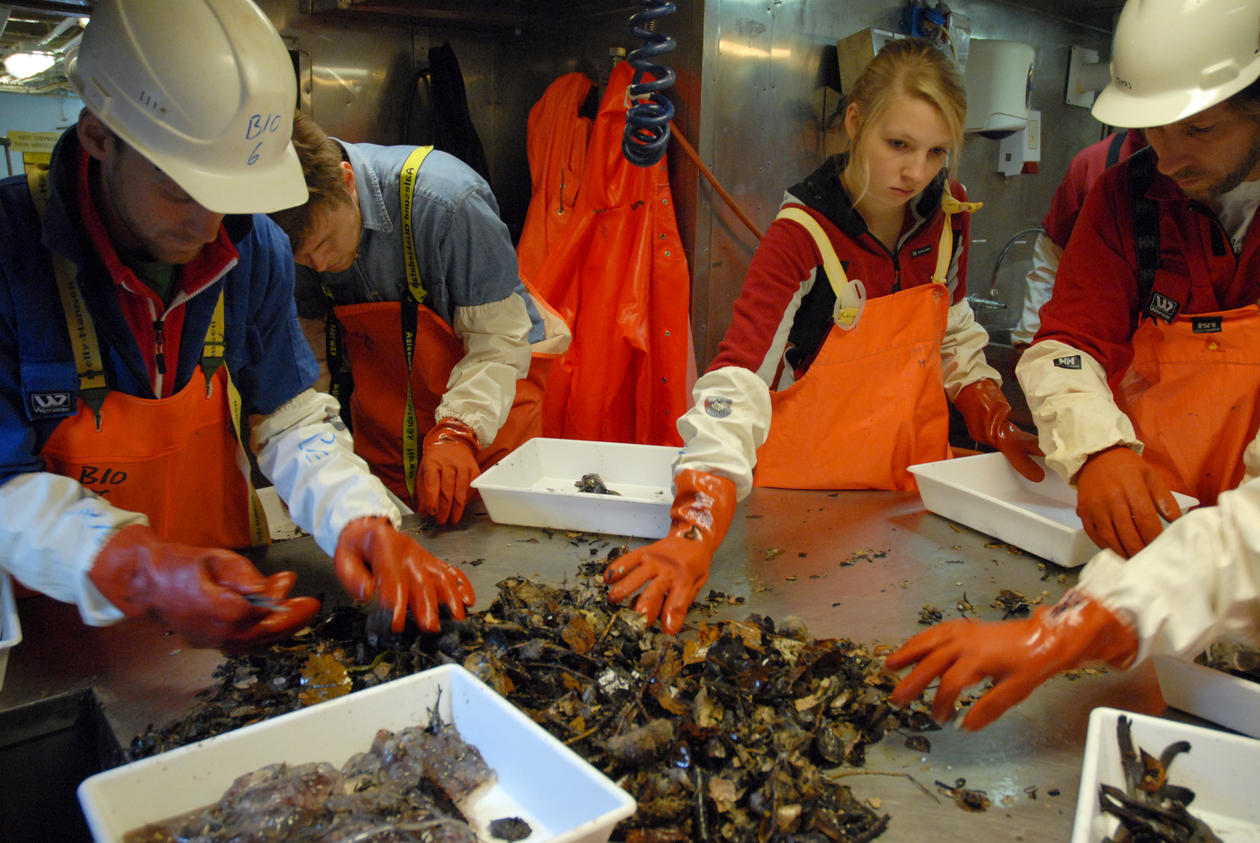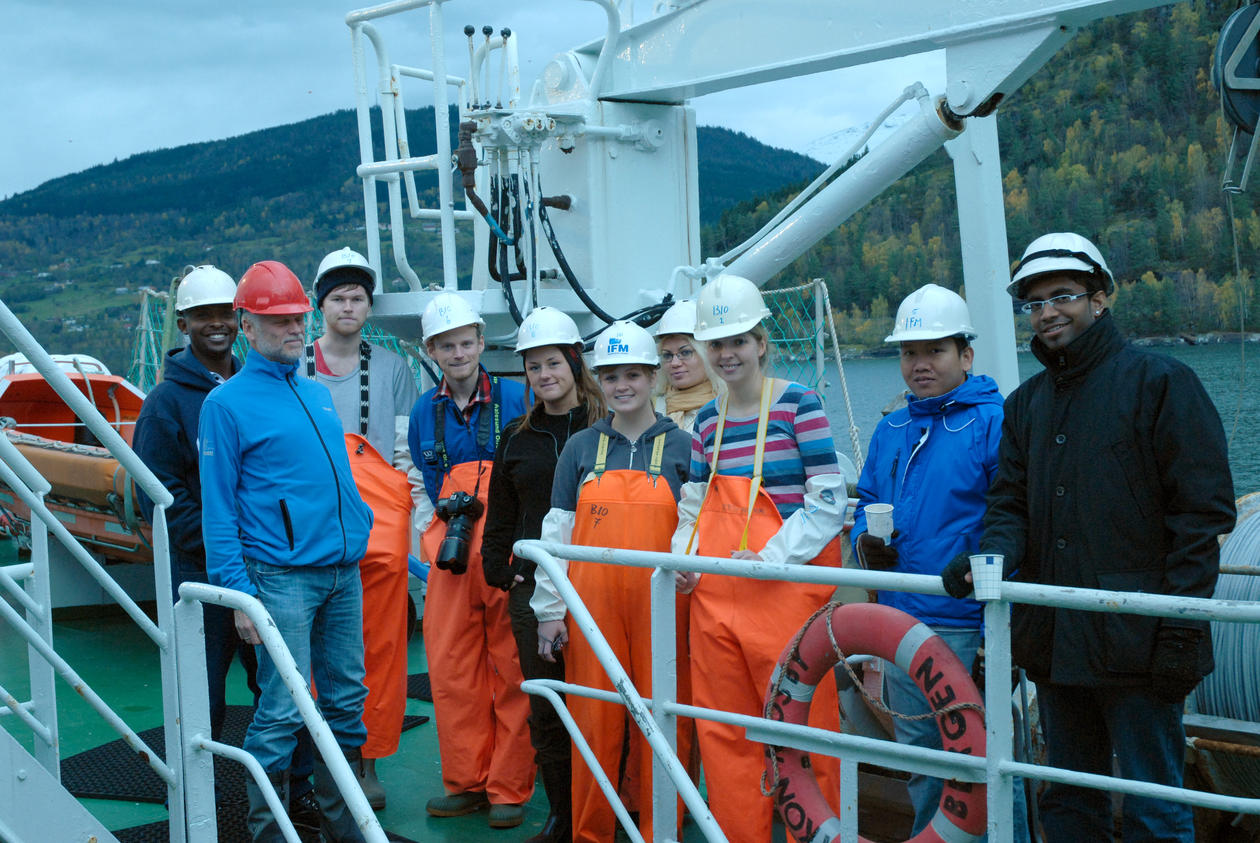Unique “hands-on” learning opportunity
The research cruise field trip undertaken by Fisheries Ecology students at BIO is a unique learning opportunity that few universities around the world offer.

Hovedinnhold
(Click on the thumbnail pictures to the right to access a larger image)
Professor Arne Johannessen has been leading this course for nearly 20 years. During this time he has built up collaboration with the Institute of Marine Research (IMR) whereby this annual field trip actually undertakes some of IMR’s regular monitoring tasks. Many of the same staff participate year after year building valuable continuity and ensuring an optimal learning experience for the students.
It is a win-win scenario: the students engage in real data-gathering activities; they are trained to use a number of different marine research gear; and they contribute to the on-going monitoring activities undertaken by IMR to ensure that Norway's marine resources are harvested in a sustainable way.
Johannessen feels that it is invaluable for the students to get out into the field and to have practical “hands-on” experiences. As they use a wide range of equipment, from acoustic sensors, through various kinds of trawls and nets that sample different depths and different sized organisms, to environmental sensors that provide information about the water column, as well as hydrographic and oceanographic instrumentation, the students are able to form a concrete idea about the whole marine ecosystem.
The sampling gear provides snapshot information about who is present – different species, different life stages – who is eating what, and who is living where. Sampling occurs around the clock on research cruises, so the students also get concrete information about ecological diel cycles – changes during a 24-hour period.
Ideally the week-long cruise travels out across the open ocean of the North Sea from Bergen to the Shetland Islands and back. A “normal” cruise plan is to travel one direction as a straight line crossing in order to undertake a hydrographic section. The other direction involves more of a zigzag trajectory in order to undertake acoustic recordings and sample the different habitats. The route crosses the Norwegian continental shelf, which drops off rather quickly into the Norwegian Trench, and then rises again up the extended continental shelf around Shetland. There are regular IMR sampling stations along the route, so the data collected contributes to valuable time-series studies of stocks and habitats.
However, this year an extensive storm system moved in to the area that would have made the North Sea crossing unpleasant, to say nothing of the conditions being too rough to operate most of the sampling equipment. But Bergen is ideally situated for marine research – while it is close to open sea, it also benefits from having a fragmented coastline with many deep fjords and strings of islands to protect vessels from the worst of stormy weather conditions.
While they were unable to do much open ocean work, the students were still able to employ the various sampling gear in settings involving deep and shallow waters.
Fisheries ecology course MAR230 (course description)
See pictures from a previous cruise (2006) that made it to Shetland. Ståle Kolbeinson is the photographer and made the web site.
